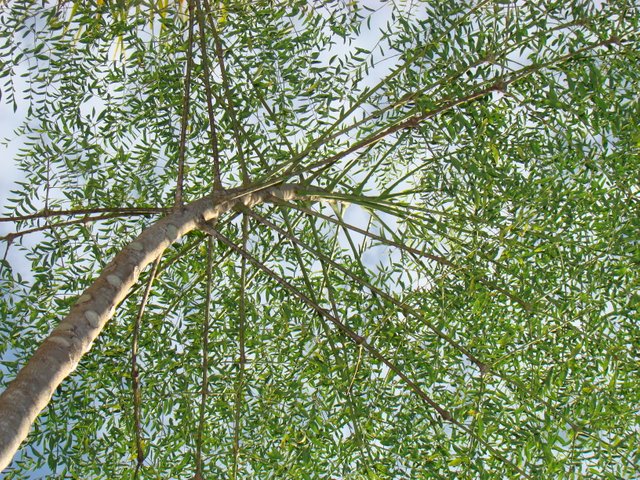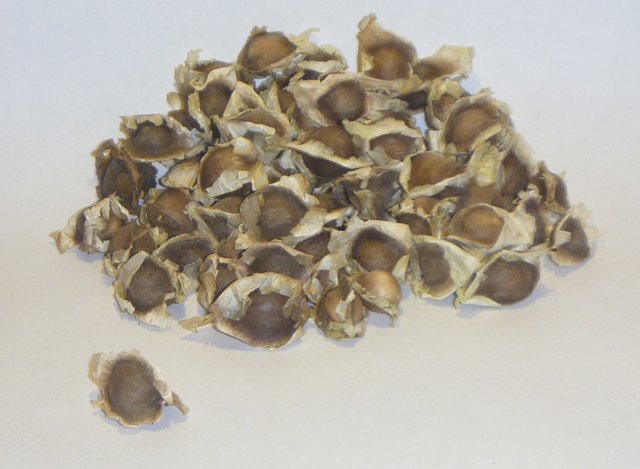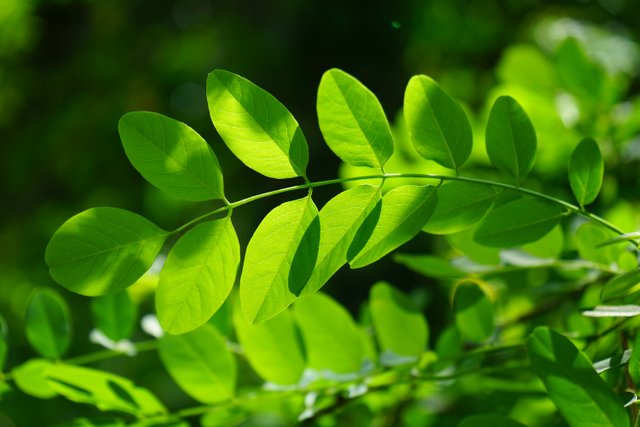THE MIRACLE TREE (MORINGA)
As a student of food science and technology, I find it necessary to educate my readers more on our food consumption. We have so many plants around, which we have little or no knowledge about its utilization to improve our health. We don't have to always go for expensive food items when we can always derive same satisfaction from cheaper food items.
I welcome you to my blog, where I discuss hidden facts about some food commodity.
Last time I discussed about green onions also known as scallion onions, baby onions, onions stick, long onions and so many other names. This vegetable is cheap, available throughout the year (meaning available in all seasons of the year) and has numerous advantages.
You can check out my previous post for a detailed information on green onions which am sure you will acquire more knowledge about the vegetable .
In addition, please try to consume green onions for I don't want you to miss out of the benefits derived from this vegetable.
Am sure you will be anxious to know what I have for you, this post is about the 'Miracle tree' known as moringa. I will love to discuss in details about moringa, its history, classification in the plant Kingdom, cultivation, nutritional value and health benefits. I hope you will have a full knowledge of this wonderful tree after reading this post. I appreciate you in advance for your time.

INTRODUCTION TO MORINGA TREE
The tree of life (moringa) can be called so many names due to the physical characteristics of the tree.
The slim, lengthy and three sides seed pods of moringa gave birth to the name 'drumstick tree' which was given to it.
It can also be called benzoil tree because of the oil which is gotten from the seeds.
For the sensation of the tongue when the root is tasted is similar to horseradish, moringa can also be referred to as horseradish tree.
Other names for moringa are shevaga, nebedaye meaning never die, sajna, kamungay, malungay, mulangay, malunggay, morango, mlonge, saijhan.
Moringa is indeed a miracle tree and tree if life, a food with remarkable health benefits. Contains four times the quantity of calcium in milk, seven times the quantity of ascorbic acid in Orange and four times the beta-carotene in carrot.
Speaking of the physical description of a moringa tree which is a transitory and rapid growing tree. Moringa trees can attain a height of 32-40 ft and trunk diameter of 1.5 ft. The hairy bark of immature shoots are greenish - white or purplish in colour. The bark is whitish - grey in colour with solid cork. Has tripinnate leaves and Frisbee branches. Also the five yellowish - white petals with thinly veins around the flowers are not the same. The flowers are asexual in nature with a length of 1-1.5 cm, and breath of 2 cm.
Below is the classification of moringa in the animal kingdom.
Moringa belongs to the kingdom Plantae.
Clades of angiosperms, rosids and eudicots.
Order of brassicales
Family of moringaceae
Belong to genus, moringa
Species of M. oleifera
The scientific name of moringa is Moringa oleifera.
HISTORY OF MORINGA TREE
Initially around 2000 BC in India, moringa was considered as a medicinal plant. Due to the poor quality of timber gotten from moringa, it was quickly considered as a source of food which is now cultivated in my countries of the world.
It can be found in India, Bangladesh, Philippines, Afghanistan, Arabia, Central America, Cambodia, Caribbean Islands, North America, South America. Moringa is also cultivated in many African countries such as Niger, Senegal, Togo, Ghana,Cameroon, Ethiopia, Mauritania, Benin,Kenya, Chad, Burkina Faso, Gambia, Eritrea, Liberia, Tanzania, Nigeria,Uganda,Sierra Leone, Mali, Sudan and Guinea.
CULTIVATION OF MORINGA TREE
Moringa grows in sub-tropical, tropical and semi-arid areas and can survive in different soil conditions. But the roots face the danger of rotting in waterlogged soil. It is a lover of sun and heat which can grow in dry regions, mainly dependent on rainwater. So therefore with no need for costly irrigation methods. Moringa trees can overcome drought because of the presence of long tap roots.
The soil types for moringa tree are sandy loam, loamy and sandy soil. It grows best in direct sunlight lower than 500m altitude. The temperature range is between 0-95 degrees Fahrenheit (25-35 degrees Celsius), with minimum yearly rainfall of 25000, and maximum yearly rainfall over 3000mm.
Flooding for a long period of time is harmful to moringa trees, likewise poor drainage.
A moringa tree can attain a height of 3m in its first year and yield 400-600 pods yearly within three years. Pods are not produced by young moringa trees only, a matured tree can yield up to 1600 pods.
In addition flowering commence within the first three months after planting, and also depends on the seasonal temperature and rainfall. Flowering occurs once in a year in cool regions and twice or even throughout the year in constant seasonal temperature and rainfall.
Moving to planting, moringa trees can be planted in our backyard, nurseries and fields depending on purpose of planting.
Moringa trees can be planted by direct seedling which can be done at anytime of the year as far as there is water supply or cutting. Seeds should be treated before planting to aid rapid germination. Below are three pre-seedling treatment that can be used:
1.Crush the shells before planting.
2.Discard shells and plant kernels only.
3.Immerse the seeds in water overnight before planting.
PLANTING IN THE NURSERY
In case you wish to plant moringa in your nursery, I have some tips for you.
The first step is to get polythene bags of about 18 cm height and diameter of 12cm, filled with soil. Then plant two to three seeds (treated seeds) into these bags, the depth of the seeds should be around 1-2cm. The soil should be moist and expect germination within 5-12 days. Also take note of the pre-treatment technique you used for your seeds, because germination also depends on that. You can also discard the extra seedlings, leaving one in each bag. Finally you can out-patient your seedlings when they are of 60-90cm height.
PLANTING IN THE FIELD
Ploughing is the first step. Then digging of a pit about 50cm deep and breath, for the purpose of retaining moisture in the root zone, making the seedlings roots develop faster is necessary. Application of manure which has been mixed with top soil, at the rate of 5kg per pits also required. Most importantly, the soil in the pits should be moist.
Spacing of the trees every 3m in rows and 3m apart is very important. This will enable adequate air passage and sunlight.
Am important fact about moringa trees which is not known to all is that, they can be planted with other field crop, for the root system of moringa trees does not compete with the crops for nutrients. They also provide shade from sunlight for vegetables that are less tolerant to sunlight. Inter-cropping with other field crops is not harmful.
Trimming of the terminal buds of moringa plant in the field is advisable. Trimming can be performed using fingers due to the fact that, the terminal growth is without bark fiber ,delicate and brittle. Knife blade can also be used for trimming.
USEFUL PARTS OF MORINGA PLANT
Almost all parts of a moringa trees can be consumed, meaning edible. A moringa tree comprises of immature seed pods(drumsticks), fully developed seeds, leaves, flowers, oil derived from seeds which are all edible. I will like to brief you on these edible parts of a moringa tree.
IMMATURE SEED PODS AND SEEDS
This is also referred to as drumsticks which is very high in vitamin C. They can be partially boiled and cooked in a curry until it is tender. Mostly consumed in South Asia. There is an amazing fact about these pods, they are actually still high vitamin C. Provides the body with manganese, dietary fiber, magnesium and potassium.
The seeds can be consumed as peas and nuts. A good source of vitamin B, C and dietary minerals.
NUTRITIONAL VALUE OF RAW MORINGA PODS
Source :USDA Nutrient Database
| Nutrient | Quantity |
|---|---|
| Carbohydrates | 8.53 g |
| Dietary fiber | 3.2 g |
| Fat | 0.20 g |
| Energy | 37 kcal |
| Protein | 2.10 g |
| Vitamins | |
| Riboflavin | 0.074 mg |
| Panthothenic acid | 0.794mg |
| Vitamin A | 4 μg |
| Vitamin C | 141.0 mg |
| Niacin | 0.620 mg |
| Thiamine | 0.0530 mg |
| Folate | 44 μg |
| Vitamin B6 | 0.120 mg |
| Minerals | |
| Phosphorus | 50 mg |
| Zinc | 0.45 mg |
| Iron | 0.36 mg |
| Sodium | 42 mg |
| Magnesium | 45mg |
| Potassium | 461 mg |
| Calcium | 30 mg |
| Manganese | 0.259mg |
| Water | 88.20mg |

Creative Commons CCO : Moringa seeds
Wikimedia Creative Commons: Moringa seed pods
LEAVES AND ROOTS
Leaves are essential source of vitamins A, B, C, K, manganese, beta-carotene, proteins, which are all useful to the body. The leaves can be used in place of spinach. Moringa leaves can be stripped from the leaf petiole, cleaned with purified water to remove debris, drained, dried which can be done in three different ways(room drying, mechanical drying,and solar drying) and finally milled.
The roots can be cut into pieces and can be used to enhance the flavour of food.
NOTE :Drying of moringa leaves has to be done in a cleaned environment. The room to be used for drying (room drying) should be free rodents, dirt and insects.
NUTRITIONAL VALUE OF RAW MORINGA LEAF
Source :USDA Nutrient Database
| Nutrient | Quantity |
|---|---|
| Carbohydrates | 8.28 g |
| Fat | 1.4 g |
| Energy | 64 kcal |
| Dietary fiber | 2.0 g |
| Protein | 9.40 g |
| Vitamins | |
| Riboflavin | 0.660 mg |
| Panthothenic acid | 0.125 mg |
| Vitamin A | 378 μg |
| Vitamin C | 51.7 mg |
| Niacin | 2.220 mg |
| Thiamine | 0.257 mg |
| Folate | 40 μg |
| Vitamin B6 | 1.200 mg |
| Minerals | |
| Phosphorus | 112 mg |
| Zinc | 0.6 mg |
| Iron | 4.00 mg |
| Sodium | 9 mg |
| Magnesium | 147 mg |
| Potassium | 337 mg |
| Calcium | 185 mg |
| Manganese | 0.36 mg |
| Water | 78.66 mg |

Creative Commons CCO : Moringa Leaves
BEN OIL
This is an edible oil extracted from the moringa. The oil is pure, free of odour and withstand rancidity. The oil can be used as biofuel. After extraction of oil, the residue known as seed cake can be useful as fertilizer and also in the purification of
water.
PESTS AND DISEASES
Moringa is resistant to most pests, but some pests have been reported to cause serious damage to the plant in India. These pests include budworm Noordia moringae, Ceroplastodes cajani and Diaspidotus sp. These pests can be controlled by spraying. Stem borers, aphids and fruit flies are damaging agents that can destroy moringa trees.
Termites often attack moringa plants, likewise animals such as goats, sheep which feeds on the leaves, pods and seedlings.
Therefore preventive measures should be taken, some of which include :
1.Making of fence or living fence round the moringa tree to keep away animals.
2.Pile ashes can be used to surround the base of the seedings to prevent termites attack.
3.Mulches of plants such as castor oil plants, can be used to protect the base of the seedlings from termites attack.
IMPORTANCE OF MORINGA TREES
Moringa trees are known as the most important tropical trees, which are of numerous benefits to our society. These trees can propagate through the two forms of reproduction, which implies through sexual and asexual means of reproduction.
The management and production of these trees are not stressful to farmers, for its little need for water and soil nutrients.
Cultivation of these trees is of benefits to the ecosystem and the farmer. The edible fruits are now one of India's goods for exportation to Europe and Asia, the fruits are packed fresh into tins.
Likewise the edible oil derived from the seeds was well appreciated by the ancient Greek, Roman and Egyptian, for use in producing perfumes, as a lubricant for machinery and in the protection of the skin.
A natural coagulant is derived from the seed kernels in a powdery form, this is however useful in the clarification of water which removes almost 99% of the bacteria.
Leaves from these trees can be used as vegetables, seed oil and gum can also be extracted. Moringa trees are also very medicinal and ornamental trees.
Moringa trees are are very useful in paper industry. The wood gotten from these trees is useful for paper, textile, cellophane and also wrapping.
HEALTH BENEFITS OF MORINGA
TREATS CANCER
When it comes to tumor therapy, moringa is very essential. Phenolic compounds
(Kaempferol and quercetin) in moringa extract has chemo preventive characteristics. Immature seed pods (drumsticks) extract is useful in the treatment of differs form of cancers, such as ovarian cancer, skin papillomagenesis, hepatic carcinogenesis., by hindering the reproduction of harmful cancer cells. The bioactive component (niazimicin) in moringa also hinders the growth of cancer cells.
DEFENDS THE CARDIOVASCULAR SYSTEM
Moringa is effective in the treatment of diabetes mellitus. Strong antioxidants in moringa prevents cardiac damage and also helps to keep a healthy heart.
FOR STRONG BONES
As we all know important minerals like calcium and Phosphorus helps to keep a healthy bone. These minerals are present in moringa. Anti-inflammatory properties gotten from moringa extract can be used to treat arthritis, and also treat bones ailments.
ENHANCE GOOD VISION
Retinal damage can be prevented by the antioxidants in moringa. It also hinders the widening of capillary membranes and guide against retinal disorder. Treatment with moringa helps to prevent retinal enlargement, thereby keeping the retinal in place.
PREVENTS HYPERTENSION
The body's cholesterol and blood pressure level can be maintained with the use of moringa. Reduction of the growth of pulmonary hypertension and widening of arteries can be prevented, in which niaziminin and isothiocyanate are compounds responsible for these actions.
HINDERS STONE DEVELOPMENT
Moringa helps to maintain endogenous oxalate synthesis and guide against stony bladder, kidney and uterus. Moringa roots aids in the reduction of urinary oxalate level.
REDUCES BLOOD SUGAR LEVEL
Diabetes can be treated with moringa for it helps to reduce the level of sugar in the blood, urine and urine proteins. Moringa enhances the protein and hemoglobin volume in a diabetic patient.
EMPOWERS THE IMMUNE SYSTEM AND INHIBITS BACTERIAL ACTION
Moringa improves the antibodies, total leukocyte number and cellular immune reactions. Moringa leaves also produce acetic extract which helps to induce the immune system.
Moringa helps prevent development of diseases caused by harmful bacteria.
CONCLUSION
Moringa trees are very useful to our community and the people. I appreciate you for your time, thanks for reading this post. More so, remember to make use of the various parts of these trees and am sure you will not regret. Please check out my blog for more health tips. Thanks.
It's nice to learn about trees that have health benefits and can be used for medical purposes.
You really did a fantastic job writing this article.
Thanks for reading it
You are most welcome.
Good to know the various benefits the Moringa plant has got. A good job well done here!
Kudos!!!
Yeah, thanks for reading.
I have actually had the moringa seed countless times. When peeled it looks like the orange vitamin C tablet and almost tastes like it, although it has a somewhat bitter taste. I never really know much of it's benefits then, but now I am glad I have been taking them.
Well done for this very insightful and informative article.
Am glad you have been taking them. Thanks for visiting my blog
Waooo.... Quite an exhaustive expository to moringa..
This was really detailed. Beautiful piece dear, thumbs up
Thanks for reading
Wow. I have this tree in my compound but I don't really know much about its numerous benefit
Interesting read
Well done
It's good to see someone drop a scintillating piece about one of the beneficial BROWSE PLANT.
Nice research and documentation, I hope it inspires someone into planting them.
I also hope people will get involved in the cultivation, for it is a very useful plant
Wow, this is quite fabulous..No wonder I hear moringa in everything - esp when u board commercial buses well in lagos..There's no "melecine" as they call it that doesn't have moringa in it...
Nice work you have done here...
i'd prefer u edit the paragraphs and add a spacing in between if the normal enter doesn't give it the look, u can try putting < br > between each paragraphs..
Thanks
I have always heard about this tree and its importance but its nice to read about it myself.
Ps: you have improved on your writing. Well done
Thank you, I appreciate it.
Such a superb write-up. Detailed and written in a style that is quite easy to follow up to the end.
Good work you've done here. Kudos for the info.
Thanks
good article @elizabeth. I read about moringa severally but I think this is more explicit. Can the extract be consumed by pregnant women and if yes in what volume? ?Thank you.